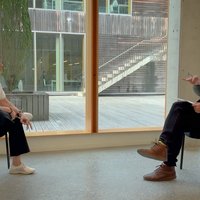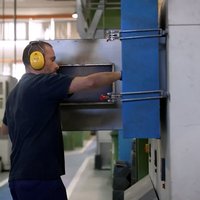Oskar Fernandez-Capetillo: "The most important prize is that I work on what I like most"
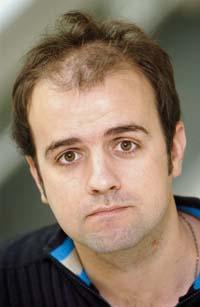
I was very clear that I wanted to research cancer. As with many other researchers, the most important thing is personal accounts. And in my case, cancer has led many people in the area. I had to be a researcher, because I am very curious; I always have something in mind, some question. Since I had to be a researcher, I chose the subject of cancer.
Swiss Bridge is by itself an organization that is part of all national cancer research organizations at European level and annually awards this award. For this purpose, they collect the curriculum of European researchers, so the curriculum is the one that rewards.
This is not entirely accurate. The award is for his work in Washington: to investigate the role of histones in cancer.
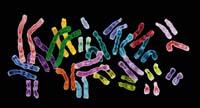
In the research nobody gets rich, of course, and I was given the prize to continue investigating. And the research will be carried out in this other project, the research of the gene e2f1. For this they gave me the prize.
However, for me the most important prize is that I work on what I like most and things go very well.
There I did the most important research. As we know, our genetic information is in the DNA molecule, but this DNA molecule is not naked, let's say. DNA is protected by other compounds, some proteins. These compounds are histones.
We know that histones protect DNA. But they were thought to have only one structural function: They compacted, assembled and manufactured DNA. But we saw that they are not passive components, but do active protection of DNA.
When DNA breaks, histones help to repair DNA, they take it to its previous configuration. I think this discovery was very important because we saw that histones have another function that was not known before.
Then we continue to investigate. Taking into account that a mutation is the modification of a gene and that these histones participate in DNA repair, we saw that the cancer can develop when mutations accumulate in histones. On this path, more or less, the investigation carried out there was abandoned.
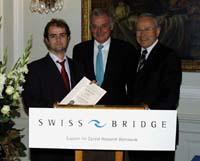
One characteristic of cancer cells is their genomic instability. Our DNA, this molecule that contains our genetic information, is found on chromosomes, has chromosomal structure. All normal cells have a certain number of chromosomes and a certain structure, in our case 23 pairs of chromosomes. Well, cancer cells -- that's universal -- have a pandemonium: chromosomes are broken or fused together... In general, all this is called genomic instability, that is, with all the chromosomes upside down.
We still know very little. As I said, the prize money is to investigate and we just started. Our thesis is that genomic instability somehow activates the e2f1 gene and that there is a problem in that cell to indicate that the cell uses the e2f1 gene. If the E2f1 gene is expressed, the cell dies. It is a sign.
Simplifying, we consider that the cells that accumulate genomic instability are eliminated through the e2f1 gene. Our thesis is that when the e2f1 gene is missing or there are mutations in the e2f1 gene, there are more cancers because the cancer cells are not destroyed. And that is precisely what we want to investigate.

As we will investigate with mice and also have to work molecular and structural biology, so we will consider a lot of approaches. Research with mouse provides a lot of information. For example, it can cause genomic instability of mouse cells. In this way we know that tumors are removed.
In principle, if our idea is direct, that e2f1 gene controls the process, i.e., the removal of cells. Therefore, if a mouse that does not have e2f1 has genomic instability, in principle many more tumors will be generated.
It is not easy. In our world we use the technique known as knockout. It works with mouse stem cells: the stem cell genome is manipulated to remove that gene; and we have tools to do so. The E2f1 gene is removed from the cell, and when the stem cell, in principle, is pluripotent, an adult organism can be formed, which is what is done, that the gene is removed to a stem cell, from which all the mouse is "redone", a new mouse is made.
For the moment, our most important biological model is the mouse. It is clear that the mouse is not the same as man. However, previous research with mice in humans is often validated. It is true that in some cases it is not fulfilled. Sometimes a treatment that works very well in the mouse, like the one that removes cancer, does not give the same result in the human being. But while looking for another model...
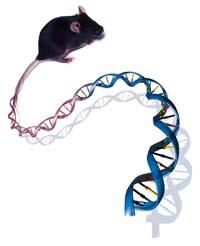
Difficulties have not changed much in the last ten years. I believe that the problem there is now -- and has always existed -- is philosophical. People have always believed that cancer can be cured with a drug against a gene. And this idea is still in force. The major research is that way: e2f1 inhibitors or other protein inhibitors are sought.
But from my point of view this can be a possible strategy in certain specific cancers and under certain conditions... But what is lacking is that all cancers find something in common and go against, and not against particular geniuses. One of the characteristics of the cancer is that cancer cells accumulate very quickly mutations, so to remove a cancer the e2f1 gene is attacked and 99% of the cells are removed. This remaining 1% accumulates mutations again and seeks new mechanisms to develop another cancer, mechanisms not related to e2f1.
In my opinion, more than against a group of genes, the strategy must be to fight against a biological principle. Last year, in 2005, two or three very important articles were published for me. As mentioned above, genomic instability is present in all cancer cells. And it is very important, not only that all cancer cells have genomic instability, but the other cells in our body do not.
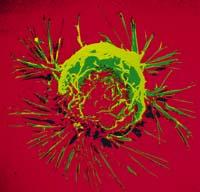
Well, in the research that appeared in these articles, he benefited from an essay designed to eliminate cells that accumulated genomic instability. In this way, they obtained a very spectacular result (and did not even appear in the media): with a drug that could kill breast cancer and leave it without touching the chest in the mouse.
I think it was incredible. And people did not pay much attention to him, although in an important magazine I think it was incredible. And people did not pay much attention to it, although it was published in an important journal, the journal Nature.
This not only occurs in science. All human beings are equal: we see the half empty bottle. But if you tell people, for example, that all cases of childhood leukemia or that 90% are resolved, it is not important. And 30 years ago that didn't happen, everyone was dying. Yes, they move forward. But if in the case of one does not work...
Buletina
Bidali zure helbide elektronikoa eta jaso asteroko buletina zure sarrera-ontzian




